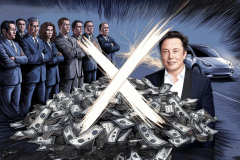Cruise Automation, the self-driving startup acquired by General Motors last year, is already operating an autonomous ride-sharing service in San Francisco for employees.
The service, called Cruise Anywhere, works like the Uber or Lyft app. Users request a ride and the nearest available car starts to drive to the location.
See Also: General Motors begins driverless tests on Michigan public roads
Due to California driving laws, an engineer is still required to be in the driving seat, but most of the journeys have been completed autonomously. In an interview with TechCrunch, co-founder and CEO Kyle Vogt said he is excited at the “rate at which [the platform] evolving.”
Around 10 percent of employees are actively using the app, with some adopting it as their primary transport mode. One employee, according to Cruise, took 60 rides in the past three weeks.
The app is not an experiment for Cruise, but the groundwork for a fully fledged ride-sharing service. “We see a future where we’re open to partnering with one network or partner, many partners or even no partners if that’s the best way to release this technology and achieve the societal benefits of driverless cars sooner,” said Vogt to TechCrunch.
Cruise uses the GM Bolt EV as its self-driving car of choice and expects to add another 100 vehicles to the fleet in the next few months. That should open up the app to more employees, though it may be over a year before the company is ready to open it up to everyday users.
At the same time, GM has already shown it can mass manufacture self-driving vehicles and is rumored to be preparing thousands of vehicles for deployment across the country next year.


















